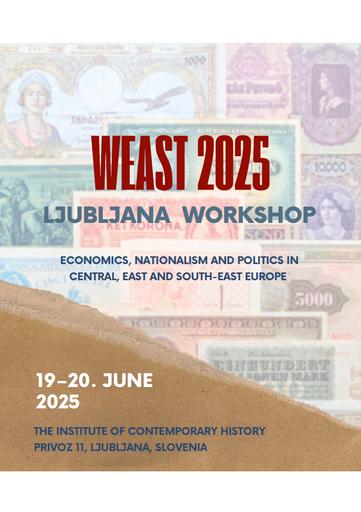/
Dogodki
/
Konference
Contradictions of economic nationalism in Russia’s Empires


To delo avtorja Marvin Suesse je ponujeno pod Creative Commons Priznanje avtorstva-Nekomercialno-Deljenje pod enakimi pogoji 4.0 Mednarodna
Datoteke (1)
Opis
I argue that nationalist policymakers do engage seriously with economic issues, guided by a coherent—if sometimes contradictory—logic. Their two primary goals are economic isolation and economic development, but these aims are inherently difficult to reconcile. The central dilemma is how to maintain national sovereignty while achieving prosperity, which often depends on international engagement. I explore the various strategies nationalists have adopted to navigate this tension, notably a ‘pick-and-mix’ approach to globalisation. This often involves selective integration into the global economy—embracing technology and skilled migration—while imposing limits on trade in goods to safeguard national autonomy. This study analyses this key tension at three historical junctures in Eastern European economic history: The Russian Empire during the post-reform period, the Soviet Union during Stalinist industrialisation, and the fragmenting Soviet Union during the late 1980s.
Metapodatki (12)
- identifikatorhttps://hdl.handle.net/11686/71121
- naslov
- Contradictions of economic nationalism in Russia’s Empires
- avtor
- Marvin Suesse
- soavtor
- Nataša Henig Miščič (mod.)
- predmet
- ekonomija
- nacionalizem
- Rusija
- opis
- I argue that nationalist policymakers do engage seriously with economic issues, guided by a coherent—if sometimes contradictory—logic. Their two primary goals are economic isolation and economic development, but these aims are inherently difficult to reconcile. The central dilemma is how to maintain national sovereignty while achieving prosperity, which often depends on international engagement. I explore the various strategies nationalists have adopted to navigate this tension, notably a ‘pick-and-mix’ approach to globalisation. This often involves selective integration into the global economy—embracing technology and skilled migration—while imposing limits on trade in goods to safeguard national autonomy. This study analyses this key tension at three historical junctures in Eastern European economic history: The Russian Empire during the post-reform period, the Soviet Union during Stalinist industrialisation, and the fragmenting Soviet Union during the late 1980s.
- založnik
- Inštitut za novejšo zgodovino
- datum
- 20. 06. 2025
- tip
- video
- jezik
- Angleščina
- jeDelOd
- pravice
- licenca: ccByNcSa
